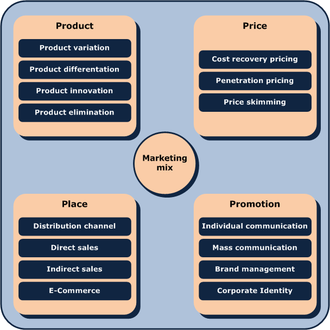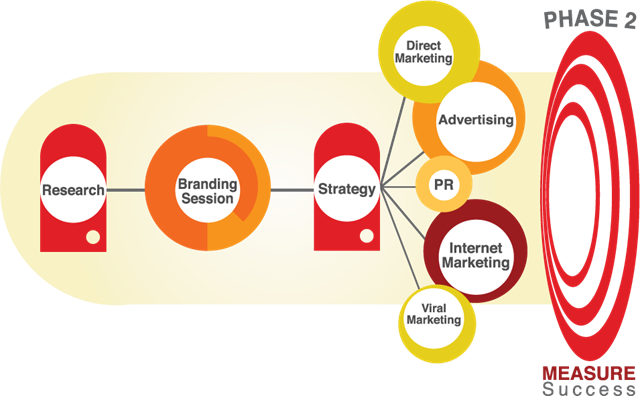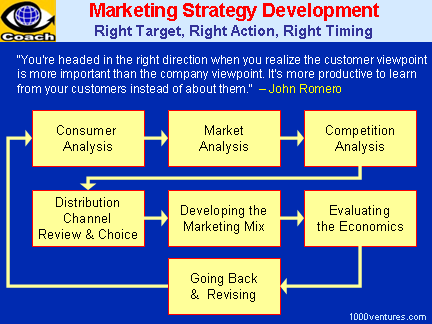Situation Analysis/Current Marketing Mix
Marketing is an integral part of an organization’s management; it creates business for a company and offers insightful information necessary for developing and innovating effective business strategies. The hospitality industry is highly competitive with new players coming up and old ones developing new working strategies or approaches; to be competitive in the industry mostly in an international market, then there is need to have strategic decisions and ensure that scientific methods of decision-making are adopted. In Australia, the hospitality industry is fast developing with new approaches to attract customers being implemented. Arnott’s family asserted is an Australian food company that faces fiancé competition from players in the same industry; to remain competitive, the company’s management needs to implement effective marketing strategies that target both national and international markets. This paper discusses an effective marketing strategy for the company; it will focus on marketing segmentation and marketing mix.
A marketing expert called E J McCarthy developed the 4ps concept in 1960; the Ps represents price, product/service, promotion, and place;
Current Product
When Arnott’s family assorted is developing a product, there is a need that the product is supposed to fulfil. The tread that the customers follow at one given point is a change to the product that gives them a higher utility. When the product is developed, the team should always invest in offering something extra to the consumer. If the target customers are aware of the expected ingredients, the campaigns should be a target with a lot of emphasis on the ingredient used. On the other hand, if the customers are not much interested in the ingredients, or they even are not aware of the ingredients, the focus should be the outcome that the product will give. The marketing campaigns should explain to the customer what benefit he would derive from using the goods. Under product, some elements need to be looked into:
Product development
At the stage, the marketer assists, Arnott’s family assorted should come up with a product that is needed in the market. The product should be the good or service that market segment is not getting from the market; the deficit in the market is the opportunity that has been seen in the market, and the company want to fulfil, the company should analyze the capacity that it has in fulfilling the need in the market
Product differentiation
With the product and the opportunity already established, the next step that a product should go under is development. When developing the product, what is important is to improve the quality of the product continually so as to at any one point a company is ahead of its competitors in customer satisfaction.
When Arnott’s family assorted has well-differentiated products, its brand will develop fast and attain customer loyalty. Customer loyalty is a marketing edge that simplifies and makes the marketing easy and cheap.
Current Pricing
The price of Arnott’s family asserted is an element of the total cost plus a profit margin; the price needs to be affordable (affordable does not necessarily mean that the company should sell its products cheaply). When a target market for a product has been established, there is a need to determine the price that the target customer will afford comfortably and still give the company a profit margin. Arnott’s family assorted marketers should use the knowledge attained in marketing research to predict consumer trends and their potential. The social class targeted will influence the price of the products. The price parameter can be approached from the actual product price or the possibility that the product can be divided into smaller parts, not necessarily cheap, but the need for this is to enhance affordability.
From a broader point of view, the market can be divided into three sections: the high class, the middle class and the lower class. The high-class are not interested in how expensive the product is, but the point of interest is the utility that the product is going to give. When they are buying things, they are looking for something extra that can make them feel special and different. To target this group, the product should try to show how it is different from others; the price can be set high since the possibility is that the group will think that the higher the price, the higher the utility.
There are five main strategies of pricing:
Premium Pricing
The approach adopted by premium pricing models is the selling of products at relatively high prices than that offered by the competitor. The strategy is particularly effective with unique or new products in the market; when Arnott’s family assorted has introduced new products, it can adapt the method to sell the commodities.
Penetration Pricing
The model advocates for a pricing method where an organization sets its prices at a low rate than that offered by the competitor; the aim of the approach is to attack a large mass of people to the products. For example, when Arnott’s family assorted is venturing in new markets, it should sell its products cheaply than competitors.
Economy Pricing
It is a pricing model that aims as keeping the bare price of commodities low; it uses organizational advantages to benefit the larger organization like Arnott’s family assorted. The approach is mostly used by established organizations with good reputations; they also use the advantage they have to set prices, for example, they can use advantage brought about by economies of scale to set low prices.
Price Skimming
Companies with strong brand name use the strategy; in the approach, the companies use their name to charge expensively for their goods, as people will believe that they have good services. It also a strategy to capture the high-class people in the economy that think that expensive is quality.
Psychological Pricing
The approach aims at creating an impression in the consumer’s mind that certain commodity is cheaply sold while it is not always the case it places prices like $99, $999 and $999; it creates a minor distinction, which has a huge benefit to a company.
Current Distribution
The market segment selected will influence the distribution channels to be adopted; where the customer is more likely to be found should be the place that the goods are provided. If the target customers are people who value recognition, they are more likely to be found in the shopping malls and posh areas; Arnott’s family assorted should determine the main places that its customers are likely to be found and make establishments in those places.
Arnott’s family assorted should be careful on the locations that it places its outlets; it should work backwards and establish the areas that their target customers are likely to be found. The main role of determining the location to market one’s products is to create availability of the products, the medium to use in advertising the goods is influenced by the place that target market is likely to be available.
Current Promotion
Promotions are done in the effort to either introduce a new product or increase the market segment. To engage in a promotion, the first thing to understand is the availability of the target customers. Marketers should establish the kind of approach to use so that they can get the attention of the target market. There are two approaches to promotion: PUSH and PULL approaches.
PUSH approach
Under this approach, Arnott’s family assorted should use the available resources to create awareness and make the product affordable to the target customer. It is an approach, which uses discounts and low pricing that are irresistible to customers. When the strategy is used, then customers are left “guilty” of not having a certain product, yet it is affordable. For example, products that guarantee quality may be sold so cheaply that when customers compare them with the price of similar goods, they are left with no option than buying it. An example of a push approach is selling commodities at half price.
PULL Approach
Under this approach, massive advertisements and persuasion mechanisms are adopted to ensure that an organization’s products knowledge of existence has been created. The end-user and the promoters are at close links and interact in the course of advertising.
The following chart shows a 4P’s chart that the company can use to reinforce its market base:

Segmentation Theory
With the internal and external marketing analysis in mind, the next step is coming up with an appropriate market that goods will be sold; Arnott’s family assorted marketing team has the role of coming up with the right market segment and targeting. Products that Arnott’s family assorted develops should meet the needs of a particular group in the community differentiated by some similar characteristics like age, income level, location, tastes and social class.
Segmentation
A market segment is a homogenous subset of the main market, which share similar characteristics that make then demand/require similar goods. A segment is also stimulated by similar innovations.
Benefit of market segmentation
When Arnott segments its market, then it will be in a position to get the best method of selling the products to a particular market. Different market segments call for a different approach to marketing, thus with segmentation, then the company will know the right method to sells it’s family assorted biscuits.
Amidst the competitive business environment, companies have to sell their products in the best method; this calls for strategic management tools to be put in place; with market segmentation, then the company can be able to come with the best marketing strategy. A marketing strategy is a well-thought process through which a company gets its products in the target market amidst prevailing competition. It involves products development, resource allocation, and positioning of a company’s products; strategic marketing can be said to be the process that is responsible for identifying, anticipating and satisfying the requirements of consumer profitably. Strategic management goes further than mere selling of products to customers as it involves creating a close relationship between the company and the customer.
With the right market segment, Arnott will be able to grow its brand name and in the future adopt the method of brand extension; strong brand name is advantageous to a company as the marketing team will be able to sell their products with ease, and the cost of marketing will reduce. The brand extension will assist the company in diversifying its business and will enter the markets more effectively.
Target Market Identification
After developing a marketing segment, the next step is to develop mechanisms to enable sales in the target market. One of the ways to enter the target market is the marketing mix. An effective marketing mix ensures that goods are available to the target customer when they need them, and they are affordable. Having the marketing segment in mind, then the company can know the kind of products that will be produced.
The following chart shows how a marketing strategy can be developed:

Generally, Arnott’s family assorted market can be divided across five main segments they are:
Geographic Segmentation
Under this segmentation, the market can be divided into three main levels:
Low-class segment
These are people who are considered to earn low amounts of income; income is dependent on the country of sales. To sell to this segment, the company must aim at selling its products lower than those of the competitions sell. This class is more sensitive to price changes. To sell low, products should be packed in the lowest quantities possible. They should also be available at low-class estates. Another method that can be used to sell at a lower cost is passing the packaging cost to the retailer. Here the company will produce goods in bulks and supply them to the retailer who will subdivide them to his customers according to various quantities they require.
Middle class
This class is well informed about the costs of a competitor’s goods. They are less likely to buy goods that they consider highly-priced. Alternatively, they will come down upon goods whose prices are very low compared to the prevailing market price. The approach to this class is to ensure that the price changed is more or less the same with the price charged by competitors.
High class
This class of people is more concerned with quality and product differentiation. They have a perception that goods that are retailing at high prices are of good quality. Prices here can be set slightly high, to benefit from this belief. However, the company should account for the high price in terms of the quality that they offer. Distribution of goods should be to places that these groups are likely to be found like shopping malls and designer shops. Packaging should be attractive since this class is attracted by the first impression.
Demographic Segmentation
The products the company is selling facilitate segmenting the market in gender line; there are some products that can be sold to women or men only, some are unisex products; when the company has this in mind, it is able to know the approach to use in reaching the segment. Men products cannot be marketed the same with women products; thus, after segmenting the next step will b effectively be determined.
Psychographic Segmentation
Different products target different ages; understanding of the needs that certain age requires will assist a company in designing and customizing its marketing strategies to that effect. For example, if the target market has been chosen to be children, product packaging and advertising will either target the children attention or coined to get the eye of a parent. Using this parameter of segmentation, the level of education of the target market is of importance in placing one’s products.
Behavioural Segmentation
To remain competitive in the highly competitive global market, the company should ensure continued product improvement. Internal processes will be improved to ensure that goods of high quality are produced by the company. This makes the company competitive, increase customer satisfaction, and the results will be loyal customers. The diagram below shows the process to be followed when developing an effective marketing strategy; it shows how different stages are interconnected to each other.

Conclusion
An effective marketing strategy will assists Arnott’s family assorted company develops mechanisms to sell products to its target market and maintain competitiveness in the fast-changing global markets. When developing a marketing strategy, analyzing the market and establishing gaps that need to be fulfilled shapes the direction that a company follows in its marketing strategy. It determined the marketing mix to adopt and the market entry strategy to adopt. An effective marketing strategy offers the chance to improve continually current strategies, products and process for the mutual benefit of customers and the company.
Bibliography
Campbell, David, Edgar David, Stonehouse George. 2011. Business Strategy: An Introduction. London: Palgrave Macmillan. Web.
Fred, David. 2008. Strategic Management: Concepts and Cases. New Jersey: Pearson Education. Web.
Hooley, Graham, and Saunders John. 2003. Competitive Strategy: The Key to Marketing Strategy. New York: Prentice Hall. Web.
Kim, Chan. 2005. Blue Ocean Strategy. Boston: Harvard Business School Press. Web.
Kotabe, Masaki, and Helsen Kristiaan. 2004.Global Marketing Management. New York: John Wiley & Sons. Web.
Kotler, Phillip, Denize Adam, and Gary, Armstrong. 2008. Principles of Marketing. Frenchs Forest NSW: Pearson Education Australia. Web.
Kourdi, Jeremy. 2009. Business Strategy: A Guide to Taking Your Business Forward. New York: Bloomberg Press. Web.
Mauborgne, Kim. Blue Ocean Strategy. Harvard: Harvard Business School Press. Web.
Monroe, Kent. 2003. The Pricing Strategy Audit. Cambridge: Cambridge Strategy Publications. Web.
Mullins, Laurie. 2004. Management. Washington: Financial Times Prentice Hall. Web.
